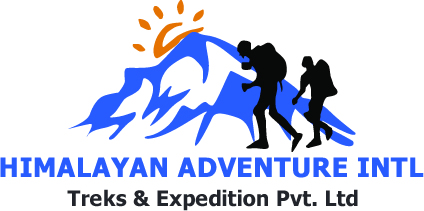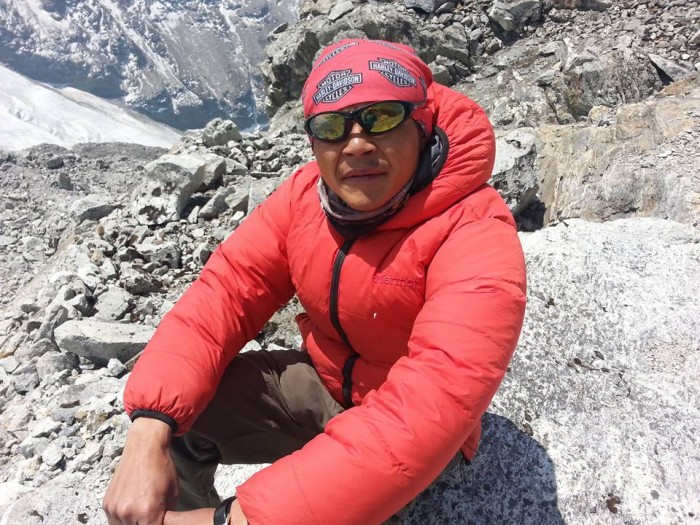Nepal is globally renowned as a mountaineer's paradise, with its towering peaks, majestic glaciers, and thrilling alpine trails. From seasoned climbers seeking technical ascents to adventurers aiming for their first summit, Nepal offers a spectrum of mountaineering challenges that are both rewarding and humbling. With over 1,300 peaks above 6,000 meters and eight of the world’s 14 highest mountains, Nepal stands as the beating heart of Himalayan adventure.
Among the many peaks that allure climbers, Chulu West Peak Climbing has steadily gained popularity for its awe-inspiring vistas, technical variety, and rewarding experience. This peak is ideal for climbers looking to expand their high-altitude skills or prepare for more demanding expeditions like Lobuche Peak Climbing or HAITE Island Peak.
How Tall is the Peak of Chulu West?
Chulu West Peak stands proudly at 6,419 meters (21,059 feet) above sea level. Located in the Annapurna region of Nepal, it is part of the larger Damodar Himal range. This elevation makes Chulu West one of the more challenging trekking peaks in the country, offering an excellent balance between mountaineering skill development and achievable summit success.
What is the Difference Between Chulu East and Chulu West?
Climbers often ask about the difference between Chulu East and Chulu West. While both peaks are part of the Chulu massif and lie in close proximity, their climbing experiences differ:
-
Chulu East (6,584m) is technically more challenging, requiring advanced climbing skills, including rope work, ice axe techniques, and glacier navigation.
-
Chulu West (6,419m), while slightly lower, is more approachable and suited for intermediate climbers or beginners with a mountaineering course background. It involves snow climbing, rock scrambling, and high-altitude endurance, but is generally less technical than Chulu East.
Choosing between the two depends on your experience level, objectives, and fitness. For those new to Himalayan climbing or transitioning from trekking to mountaineering, Chulu West is an ideal start.
Chulu West Itinerary
Here’s a detailed Chulu West itinerary provided by Himalayan Adventure International Treks, ensuring acclimatization, adventure, and safety throughout your journey.
Day 1: Arrival in Kathmandu (1,400m)
Day 2: Kathmandu to Besisahar (820m)
Day 3: Besisahar to Chame (2,710m)
Day 4: Chame to Pisang (3,300m)
Day 5: Pisang to Manang (3,540m)
Day 6: Acclimatization in Manang
Day 7: Manang to Leder (4,200m)
Day 8: Leder to Chulu West Base Camp (4,900m)
Day 9: Acclimatization and climbing training
Day 10: Base Camp to High Camp (5,500m)
Day 11: Summit Chulu West (6,419m) and return to Base Camp
-
Early morning summit push.
-
Spectacular views of Annapurna, Dhaulagiri, and Tibet.
-
Return safely to Base Camp.
Day 12: Reserve day (Weather contingency)
Day 13: Base Camp to Manang
Day 14: Manang to Jomsom (2,720m)
Day 15: Jomsom to Pokhara
Day 16: Pokhara to Kathmandu
Day 17: Departure or onward travel
This Chulu West itinerary is flexible and can be customized depending on your pace, goals, or weather conditions.
Mountaineering Course Nepal: Preparing for Chulu West
If you're new to high-altitude climbing, we highly recommend taking a mountaineering course in Nepal before attempting Chulu West. Himalayan Adventure International Treks offers pre-expedition training, focusing on:
This kind of preparation ensures that climbers are confident and competent when navigating the challenges of Himalayan peaks.
Lobuche East Peak Expedition and Chulu West: A Comparative Experience
While both Lobuche East Peak expedition and Chulu West offer thrilling alpine climbing, the experiences differ in terrain and scenery.
-
Lobuche East (6,119m) is located in the Khumbu region near Everest, part of the Khumbu 3 peaks challenge (alongside Island Peak and Pokalde).
-
Chulu West (6,419m) lies in the Annapurna region and provides a more remote experience.
Climbers who have completed Lobuche Peak Climbing often choose Chulu West as a follow-up climb to refine their skills and explore a new part of Nepal.
Three Peaks Nepal Adventure
For those seeking an epic Himalayan trilogy, Chulu West can be part of the Three Peaks Nepal adventure, combining:
-
Chulu West (6,419m) – in the Annapurna region
-
Island Peak (6,189m) – part of HAITE** Island Peak** program
-
Lobuche East (6,119m) – in the Everest region
This sequence offers a complete cross-Himalayan experience, blending technical climbs, cultural immersion, and the full spectrum of alpine environments.
How Much is the Peak Climbing Permit?
For Chulu West, the Nepal Mountaineering Association (NMA) classifies it as a Group “B” peak. The permit cost is based on the season:
-
Spring (March-May): USD 250
-
Autumn (Sept-Nov): USD 125
-
Winter & Summer (Dec-Feb & Jun-Aug): USD 70
Additional costs include Annapurna Conservation Area Permit (ACAP) and TIMS (Trekkers Information Management System), which are around USD 30 and USD 20 respectively.
How Much Does it Cost to Climb Annapurna?
If you're considering upgrading from trekking peaks to 8,000m giants, you might ask: How much does it cost to climb Annapurna?
Climbing Annapurna I (8,091m) is an entirely different undertaking. Costs range from USD 15,000 to USD 25,000 depending on logistics, guiding services, permit fees (USD 1,800), oxygen support, and summit bonuses for Sherpas.
In comparison, Chulu West Peak Climbing is much more accessible financially, typically costing between USD 2,500 to USD 3,500, making it perfect for budding alpinists.
Why Choose Himalayan Adventure International Treks?
At Himalayan Adventure International Treks, we provide unmatched professionalism, local expertise, and a commitment to safety. Our Chulu West climbing packages include:
-
Experienced IFMGA/NNMGA-certified guides
-
Customized itineraries
-
Pre-climb mountaineering training
-
High-quality gear and logistics
-
Cultural immersion with local communities
Whether you're preparing for Three Peaks Nepal or building your foundation with Chulu West, we are here to guide every step of your Himalayan journey.
Best Time to Climb Chulu West
The ideal seasons for Chulu West are:
-
Spring (March to May): Stable weather, blooming rhododendrons, and longer days.
-
Autumn (September to November): Clear skies, excellent mountain views, and cooler temperatures.
Avoid the monsoon (June–August) and mid-winter (December–February) due to unstable weather and snow accumulation.
Cultural Highlights
Chulu West lies in the Annapurna region, home to the Gurung and Manangi people. Along the trail, you’ll encounter:
-
Ancient Tibetan-style monasteries
-
Buddhist stupas and chortens
-
Yak herders and traditional tea houses
-
Muktinath Temple, sacred to Hindus and Buddhists
This mix of natural and cultural richness adds a meaningful layer to your expedition.
Chulu West Peak Climbing is an extraordinary Himalayan experience that bridges the gap between trekking and high-altitude mountaineering. With stunning views, moderate technical demands, and a deep cultural backdrop, it is perfect for those ready to take their alpine ambitions to the next level.
Whether you’re planning to challenge yourself with Khumbu 3 peaks, explore the Three Peaks Nepal journey, or simply want to answer your own calling to the mountains, Chulu West awaits.
Let Himalayan Adventure International Treks be your partner on this unforgettable expedition.

 Plan Your Trip Now
Plan Your Trip Now 


